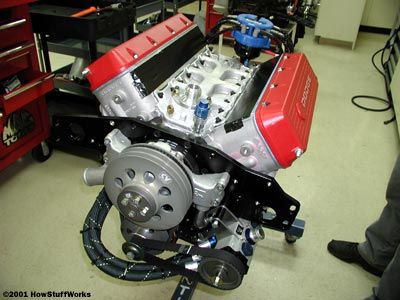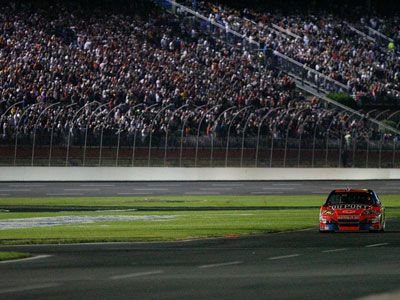High-speed, souped-up cars, competition, danger, roaring engines and flying mud -- put them all together and you have one popular sport: dirt stock car racing.
On any given weekend throughout most of the year, almost 800 dirt tracks come to life across America. Tickets are bought, prize money is won, autographs are signed and damaged cars are hauled away by wreckers.
Advertisement
Unlike its asphalt counterpart, which has a main governing body -- the National Association of Stock Car Racing (NASCAR) -- dirt stock car racing is more decentralized. It is guided by a diverse array of sanctioning organizations. Some are national; most are regional. Each organization can select the particular types of vehicle configurations it wants to sanction.
Together, the sanctioning organizations and track owners have devised rules and regulations that govern dirt stock car racing. Competitors can choose to participate in as many races as they'd like, as long as the vehicle they're racing complies with an event's guidelines. Each track has a technical inspector, or tech, to ensure participants meet the required vehicle standards [source: Jewett].
Because there are so many tracks and such a variety of sanctioning bodies, rules for one particular type of race can be completely different from a similar race at another venue. The more popular divisions, such as "dirt late models" and "modifieds" tend to have guidelines that are more consistent across the country. Others, like some of the entry-level classes, have few specific guidelines beyond certain safety requirements [source: Holder].
Most race events are broken down into different categories, which are defined by the type of vehicle being used. For example, one event may have 70 different race teams competing in five different divisions. Preliminary heats transpire, with drivers vying for spots in the final races. Prize money goes to the top finishers, who also earn points from an event's sanctioning organization, which also awards payouts to top racers at year's end.
Read on to learn what's under the hood of dirt racing stock cars.
Advertisement



